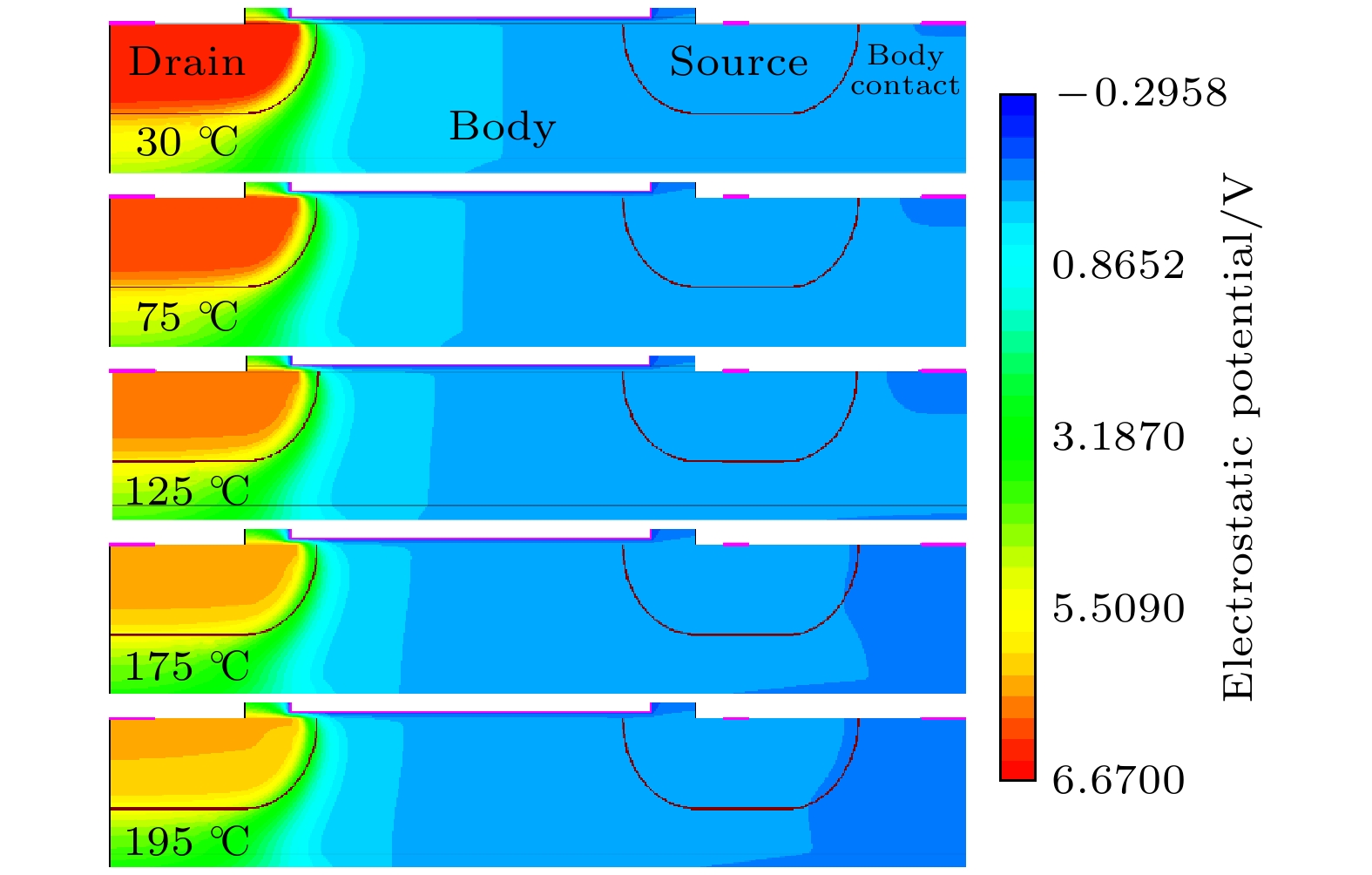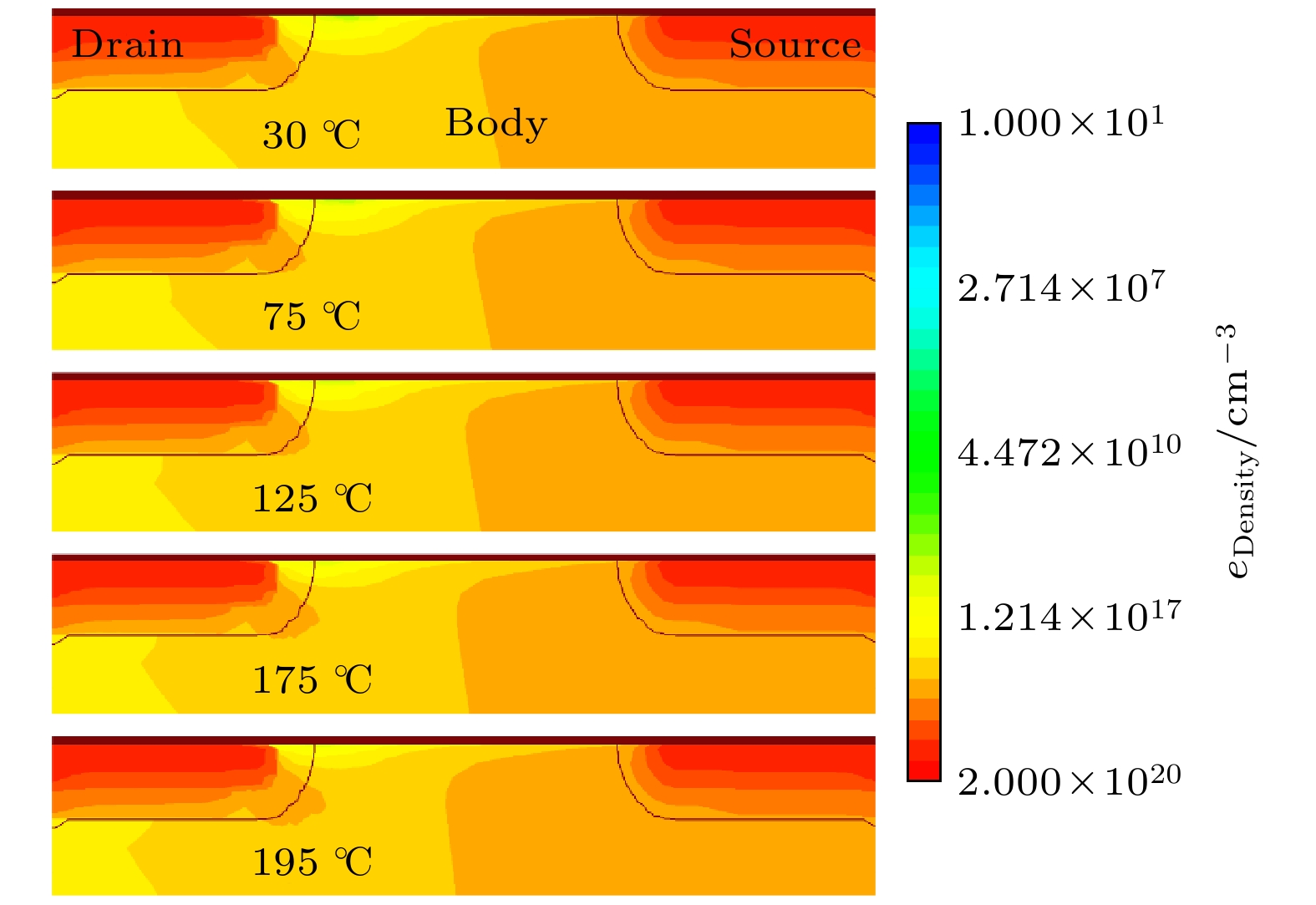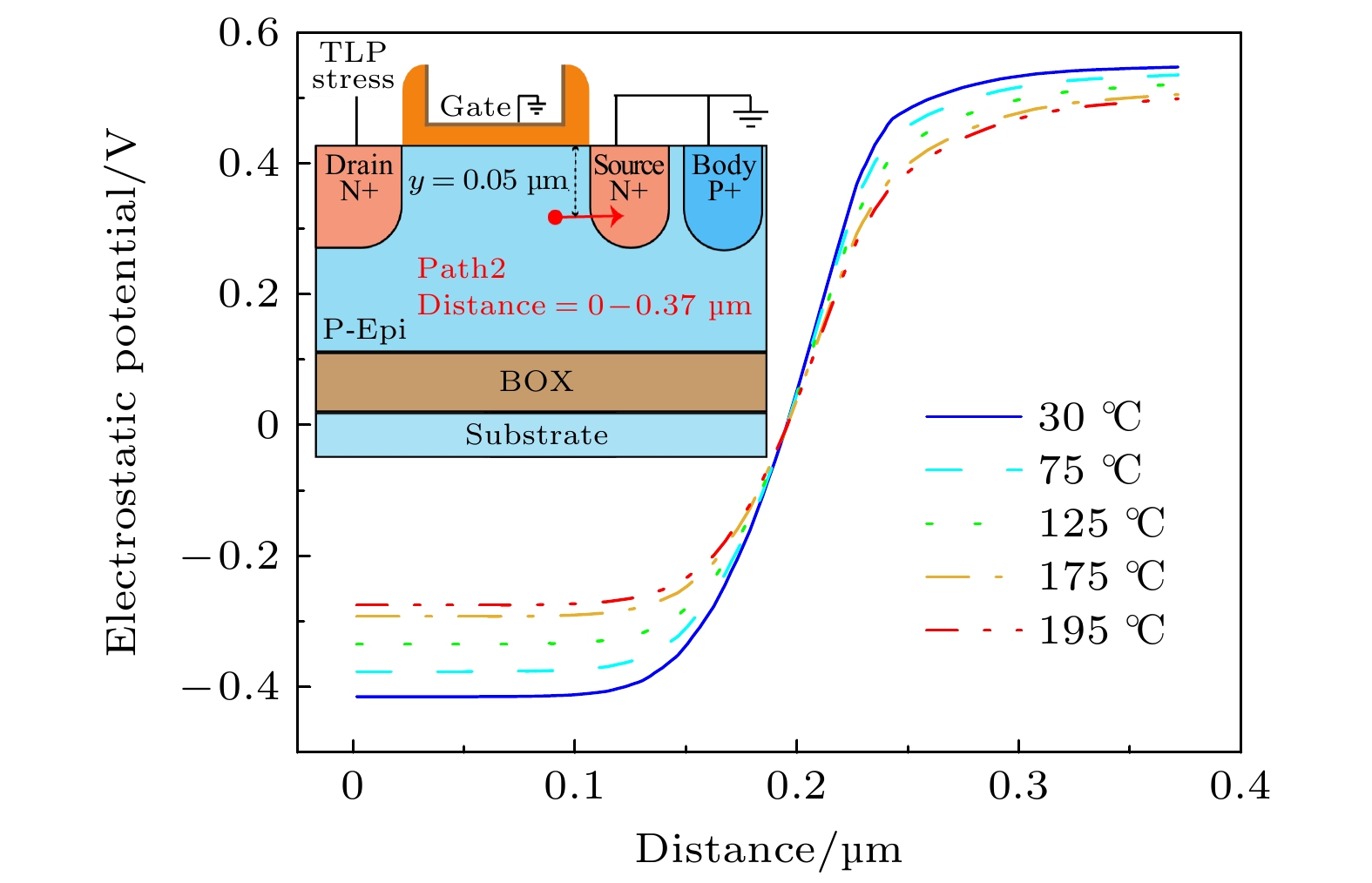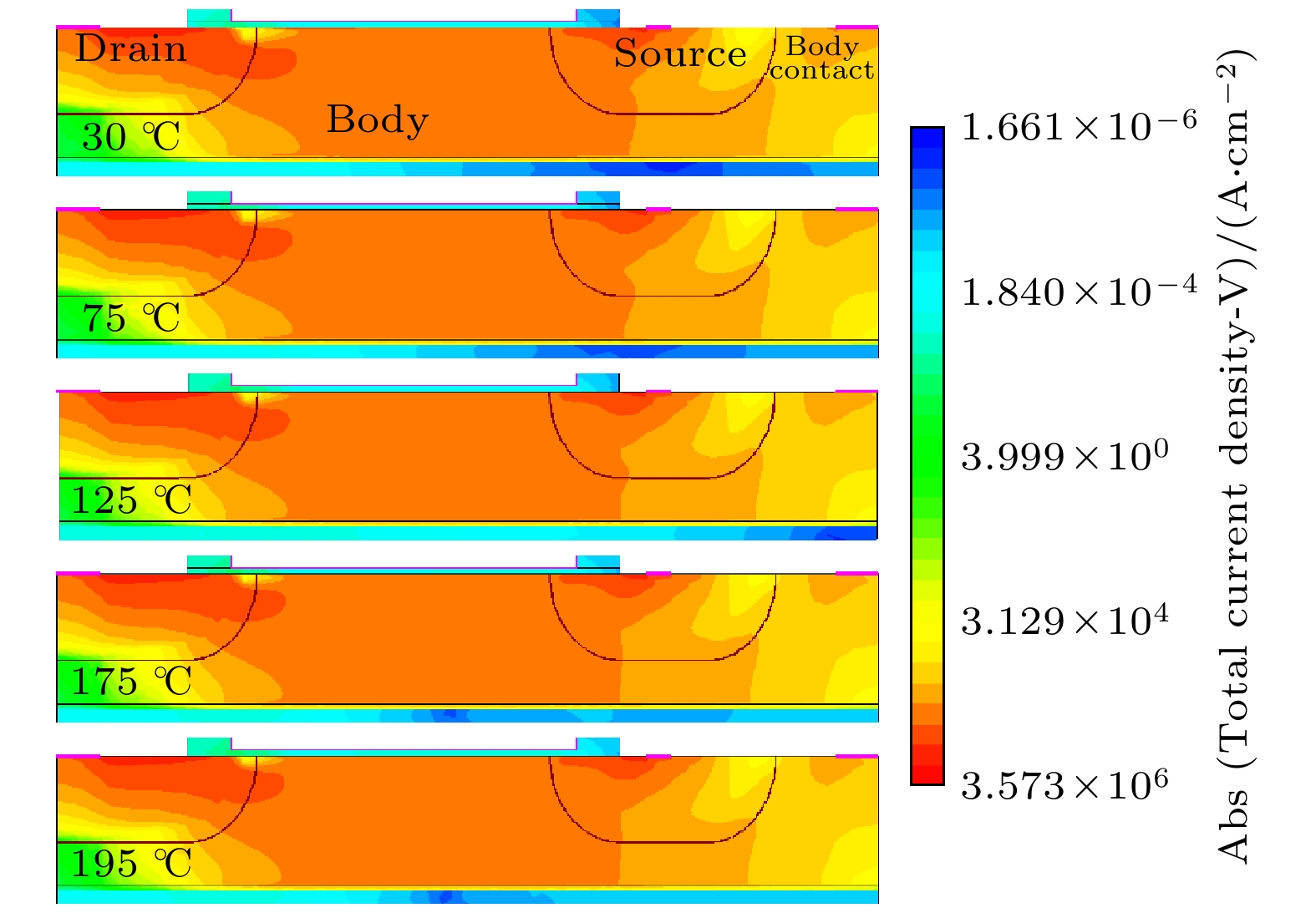-
The holding voltage of electrostatic discharge (ESD) protecting structure is the critical parameter to determine the latch-up performance of the protecting device, but the thermal change of ESD device parameters lead the protecting device to suffer latch-up risk at high ambient temperature. In this paper, the holding characteristics of the ESD protecting device at various ambient temperatures ranging from 30 ℃ to 195 ℃ are studied. The investigated ESD structure is the N-channel metal oxide semiconductor (NMOS) transistors fabricated with the 0.18 μm partially depleted silicon-on-insulator process. The ESD characteristics of the device are measured by the transmission line pulse test system at different ambient temperatures. The test results show that the holding voltage (VH) decreases with temperature increasing. The TCAD simulation is carried out to support and analyze the experimental results, and the same trend of VH versus temperature is obtained. Through the analysis of simulation results and theoretical derivation, the underlying physical mechanisms related to the effects of temperature on VH and holding current (IH) are discussed in detail. When the drain is subjected to the same current pulsing and the Source and Body are both grounded, the distributions of current density, electric potential, and injected electron density of NMOS at various temperatures are extracted and analyzed. When the Drain, Source, and Body are all grounded, the distributions of the electrostatic field at various temperatures are extracted and analyzed. The distribution of electric potential in NMOS indicates that the voltage drop on the Drain-Body junction (VDB) is affected by ambient temperature significantly, and the variation of VDB dominates the variation trend of VH with temperature increasing. The reducing electrostatic field and increasing injected electron density with temperature decreasing contribute to the decreasing of VDB. The trend of IH and parasitic Body resistance (RBody) weakens the temperature dependence of the VH. The current gain of parasitic bipolar transistor (β) decreases with ambient temperature rising, which is the main contributor to the decreasing of IH. Therefore, increasing IH and RBody is helpful in reducing the temperature dependence of the latch-immune ESD protection structure.
-
Keywords:
- electrostatic discharge /
- metal-oxide-semiconductor field-effect transistor /
- holding voltage /
- high temperature
[1] Bafleur M, Caignet F, Nolhier N, 2017 ESD Protection Methodologies (Amsterdam, Holland: Elsevier) xvii
[2] Vinson J E, Liou J J 1998 Proc. IEEE 86 399
 Google Scholar
Google Scholar
[3] Duvvury C, Amerasekera A 1993 Proc. IEEE 81 690
 Google Scholar
Google Scholar
[4] Ker M D 1999 IEEE Trans. Electron. Devices 46 173
 Google Scholar
Google Scholar
[5] Ker M D, Hsu C K 2005 IEEE Trans. Device Mater. Reliab. 5 235
 Google Scholar
Google Scholar
[6] Voldman S H 2008 LATCHUP (Hoboken, New Jersey: John Wiley & Sons) p1
[7] Boselli G, Duvvury C 2005 Microelectron. Reliab. 45 1406
 Google Scholar
Google Scholar
[8] Voldman S H 2005 Microelectron. Reliab. 45 437
 Google Scholar
Google Scholar
[9] Wang A 2002 On-chip ESD Protection for Integrated Circuits: An IC Design Perspective (Boston, MA: Springer) p1
[10] Ker M, Wu C Y, Chang H H 1996 IEEE Trans. Electron. Devices 43 588
 Google Scholar
Google Scholar
[11] Li C, Zhang F, Wang C K, Chen Q, Lu F, Wang H, Di M F, Cheng Y H, Zhao H J, Wang A 2018 14th IEEE International Conference on Solid-State and Integrated Circuit Technology (ICSICT) Qingdao, China 2018 p743
[12] Wang J X, Li X J, Zhao F Z, Zeng C B, Li D L, Li L C, Li J J, Li B, Han Z S, Luo J J 2021 Chin. Phys. B 30 078501
 Google Scholar
Google Scholar
[13] Wang J X, Zhao F Z, Ni T, Li D L, G L C, Wang J J, Li X J, Zeng C B, Luo J J, Han Z S 2021 Microelectron. Reliab. 126 114239
 Google Scholar
Google Scholar
[14] Tazzoli A, Marino F A, Cordoni M, Benvenuti A, Colombo P, Zanoni E, Meneghesso G 2007 Microelectron. Reliab. 47 1444
 Google Scholar
Google Scholar
[15] Won J I, Lee H D, Lee K Y, Kim K D, Koo Y S 2009 IEEE Region 10 Conference 2009 Singapore, 2009 p2553
[16] Jang S L, Lin S L 2000 Solid-State Electron. 44 2139
 Google Scholar
Google Scholar
[17] Liang W, Dong A, Li H, Miao M, Kuo C C, Klebanov M, Liou J J 2016 Microelectron. Reliab. 66 46
 Google Scholar
Google Scholar
[18] Meneghesso G, Tazzoli A, Marino F A, Cordoni M, Colombo P 2008 46 th Annual IEEE International Reliability Physics Symposium Phoenix 2008 p3
[19] Hou F, Liu J Z, Liu Z W, Huang W, Gong T X, Liou J J 2019 IEEE Trans. Electron Devices 66 2044
 Google Scholar
Google Scholar
[20] Do K I, Jin H S, Lee B S, Koo Y S 2021 IEEE J. Electron Devices Soc. 9 1017
 Google Scholar
Google Scholar
[21] Wu M, Lu W Z, Zhang C C, Peng W, Zeng Y, Jin H, Xu J, Chen Z J 2020 Semicond. Sci. Technol. 35 045016
 Google Scholar
Google Scholar
[22] Li S S 1978 Solid-State Electron. 21 1109
 Google Scholar
Google Scholar
[23] Khanna V K 2017 Extreme-Temperature and Harsh-Environment Electronics: Physics, Technology and Applications (Boca Raton: CRC Press)
-
-
[1] Bafleur M, Caignet F, Nolhier N, 2017 ESD Protection Methodologies (Amsterdam, Holland: Elsevier) xvii
[2] Vinson J E, Liou J J 1998 Proc. IEEE 86 399
 Google Scholar
Google Scholar
[3] Duvvury C, Amerasekera A 1993 Proc. IEEE 81 690
 Google Scholar
Google Scholar
[4] Ker M D 1999 IEEE Trans. Electron. Devices 46 173
 Google Scholar
Google Scholar
[5] Ker M D, Hsu C K 2005 IEEE Trans. Device Mater. Reliab. 5 235
 Google Scholar
Google Scholar
[6] Voldman S H 2008 LATCHUP (Hoboken, New Jersey: John Wiley & Sons) p1
[7] Boselli G, Duvvury C 2005 Microelectron. Reliab. 45 1406
 Google Scholar
Google Scholar
[8] Voldman S H 2005 Microelectron. Reliab. 45 437
 Google Scholar
Google Scholar
[9] Wang A 2002 On-chip ESD Protection for Integrated Circuits: An IC Design Perspective (Boston, MA: Springer) p1
[10] Ker M, Wu C Y, Chang H H 1996 IEEE Trans. Electron. Devices 43 588
 Google Scholar
Google Scholar
[11] Li C, Zhang F, Wang C K, Chen Q, Lu F, Wang H, Di M F, Cheng Y H, Zhao H J, Wang A 2018 14th IEEE International Conference on Solid-State and Integrated Circuit Technology (ICSICT) Qingdao, China 2018 p743
[12] Wang J X, Li X J, Zhao F Z, Zeng C B, Li D L, Li L C, Li J J, Li B, Han Z S, Luo J J 2021 Chin. Phys. B 30 078501
 Google Scholar
Google Scholar
[13] Wang J X, Zhao F Z, Ni T, Li D L, G L C, Wang J J, Li X J, Zeng C B, Luo J J, Han Z S 2021 Microelectron. Reliab. 126 114239
 Google Scholar
Google Scholar
[14] Tazzoli A, Marino F A, Cordoni M, Benvenuti A, Colombo P, Zanoni E, Meneghesso G 2007 Microelectron. Reliab. 47 1444
 Google Scholar
Google Scholar
[15] Won J I, Lee H D, Lee K Y, Kim K D, Koo Y S 2009 IEEE Region 10 Conference 2009 Singapore, 2009 p2553
[16] Jang S L, Lin S L 2000 Solid-State Electron. 44 2139
 Google Scholar
Google Scholar
[17] Liang W, Dong A, Li H, Miao M, Kuo C C, Klebanov M, Liou J J 2016 Microelectron. Reliab. 66 46
 Google Scholar
Google Scholar
[18] Meneghesso G, Tazzoli A, Marino F A, Cordoni M, Colombo P 2008 46 th Annual IEEE International Reliability Physics Symposium Phoenix 2008 p3
[19] Hou F, Liu J Z, Liu Z W, Huang W, Gong T X, Liou J J 2019 IEEE Trans. Electron Devices 66 2044
 Google Scholar
Google Scholar
[20] Do K I, Jin H S, Lee B S, Koo Y S 2021 IEEE J. Electron Devices Soc. 9 1017
 Google Scholar
Google Scholar
[21] Wu M, Lu W Z, Zhang C C, Peng W, Zeng Y, Jin H, Xu J, Chen Z J 2020 Semicond. Sci. Technol. 35 045016
 Google Scholar
Google Scholar
[22] Li S S 1978 Solid-State Electron. 21 1109
 Google Scholar
Google Scholar
[23] Khanna V K 2017 Extreme-Temperature and Harsh-Environment Electronics: Physics, Technology and Applications (Boca Raton: CRC Press)
Catalog
Metrics
- Abstract views: 8048
- PDF Downloads: 113
- Cited By: 0














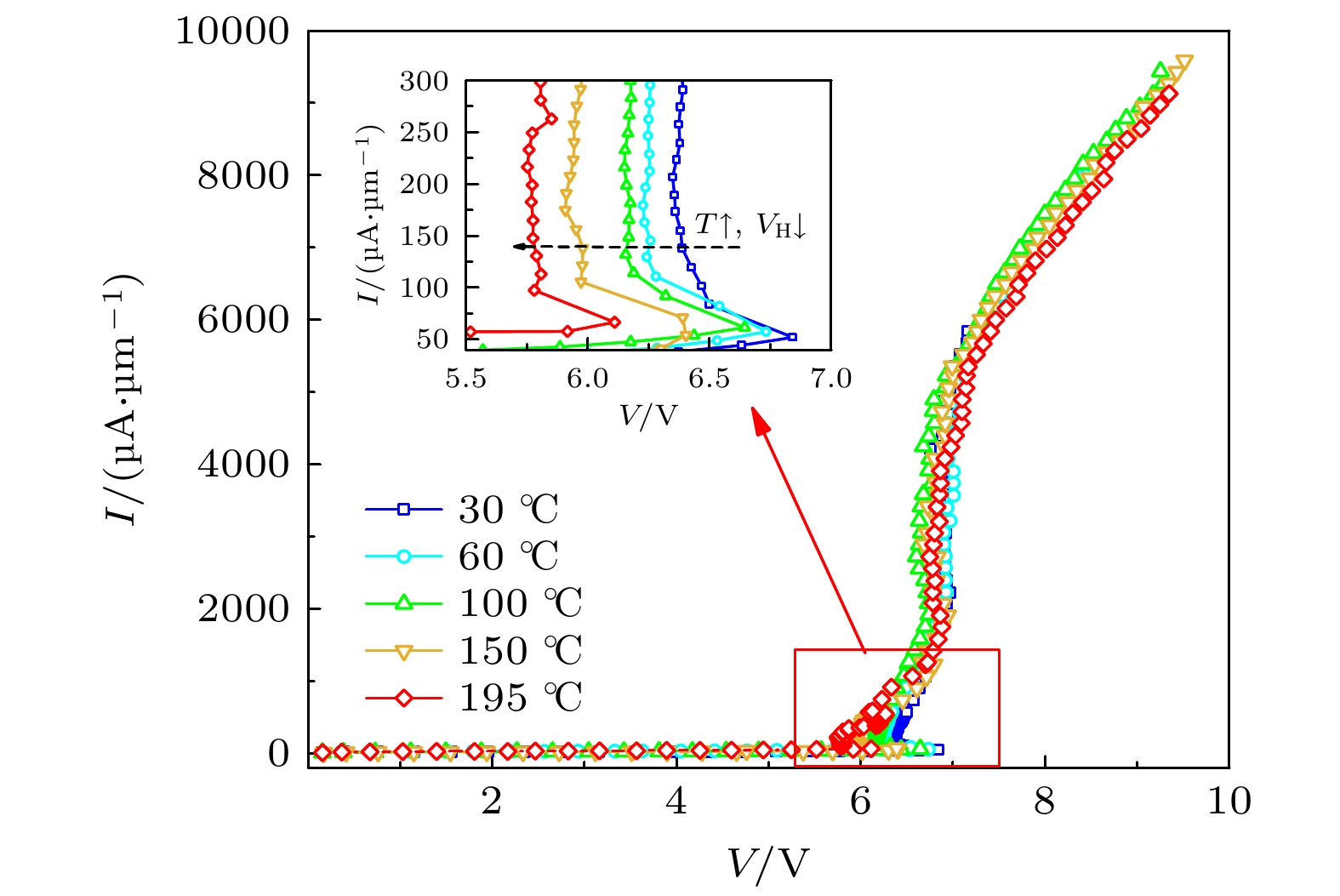
 DownLoad:
DownLoad:



